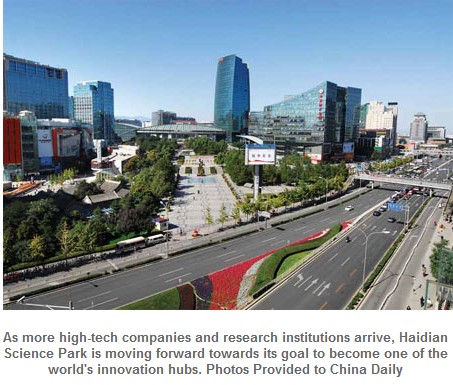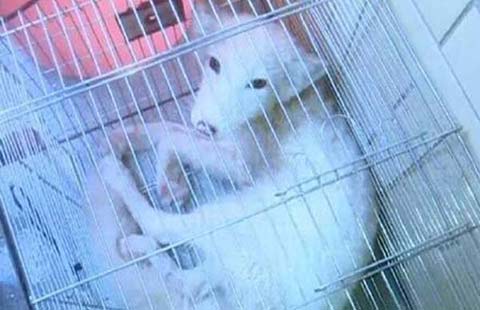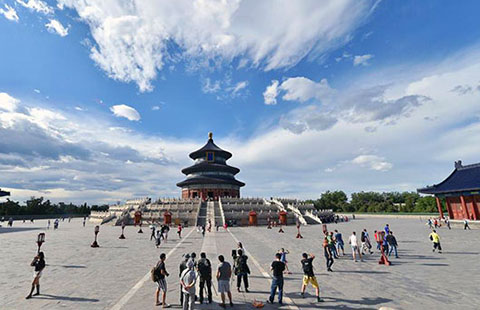Global vision at Haidian Science Park
(China Daily) Updated: 2014-03-07 11:16Change in business mix and push for innovation
At the beginning of the year, authorities at Haidian Science Park redoubled their efforts to turn the top science park in China into one of the world's leading high-tech innovation hubs.
Officials at the administrative committee of the park said they will continue to highlight protecting intellectual property rights this year to enhance the park's core competitiveness.
They said their tasks will include improving the standards of IP management among local companies while setting up a patent information database and coordinating with other regions and organizations for IP-related law enforcement.
The park in Beijing's Haidian district is projected to have more than 5,000 nationally competitive high-tech enterprises by the end of the year.
Revenue from all businesses there is projected to reach some 1.4 trillion yuan ($228 billion) in 2014, up 15 percent from the previous year.
In 2013, local companies filed nearly 40,000 patent applications, 33 percent of the total in Beijing. The number of granted patents increased 10 percent over 2012 to 22,000, including 11,800 invention patents.
Committee officials said the emphasis on IP protection is part of their growing efforts in recent years to transform the park into a global innovation hub.
Initiatives also include attracting, training and retaining talented people, as well as reshuffling local businesses for a better industrial structure.
Already the nation's innovation center, the science park has acted as a talent magnet with a group of universities, research institutions and high-tech companies.
As of September last year, nearly 980 Chinese professionals who had returned from overseas were working at the park, up 24 percent from 2010, and more than 64,000 of the workforce had a bachelor's degree or above, an increase of 27 percent from 2010.
It now boasts about 40 top scientists from the Chinese Academy of Sciences and Chinese Academy of Engineering, 220 post-doctors and six special institutions for training young talent. Many of the professionals have participated in important science and technology projects.
Reshuffle program
The Haidian district government and the park's administrative committee also began a program in 2009 to guide a restructuring in the local mix.
Small electronic product stores have been moved out to change the district's reputation as a major electronic market. They are being replaced with more high-tech companies and financial institutions.
The reform first hit the renowned Dinghao electronics market, one of three iconic electronics malls in the district.
Opened in 2003, Dinghao Plaza grew steadily over the ensuing decade and by 2012 was home to more 800 businesses and shops.
The lack of high-quality staff caused an increasing number of complaints from customers about service, while the large volume of customers also put pressure on nearby transportation and infrastructure.
With financial aid and policy support from the government, the Dinghao management team cleared out 180 electronics stores that covered a combined area of nearly 32,000 square meters, 58 percent of the mall's total floor space.
They then introduced 162 high-tech companies and startups. New operations include Innovation Works, the Tsinghua Science Park and the China International Technology Transformation Center.
The number of employees has been reduced by 61 percent, but quality is improving with more professionals and well-educated people joining the team.
The change was very difficult and even "heartbreaking" at the beginning, said Na Shuyuan, deputy general manager of Dinghao Plaza, who recalled that some shop owners wept and begged her to stay when they were negotiating the relocation of their stores.
"They have deep feelings for this building," Na said. "Many shop owners had run their businesses since the establishment of Dinghao and did not quite understand the necessity of the industrial transformation, so they were very sad, even though we had found another place for them."
The mall also suffered from economic losses and increased management costs, but "such pains are what we must handle because we know that it is time to change", Na said.
But the advantages are obvious, she said.
"We now have a better working environment and the social status of Dinghao also improved," she said.
In addition, many buildings in the science park are also used by innovative corporations and scientific research institutes. Of the nearly 3,000 companies it added in the past three years, 93 percent are in high-tech and creative industries.
Zhang Qi, deputy general manager of the park's Zhongguancun Dream Laboratory, said an increasing number of young people are pursuing their dreams in the area.
"They always bring entirely new perspectives and approaches when creating the future," he said.
haonan@chinadaily.com.cn

- Premier commends nation's teachers
- Helicopter fleets to double
- Prisoners freed under new amnesty
- Delegation salutes Tibet anniversary
- Officials are told to act as anti-graft watchdogs
- Great Wall safeguarded in united action
- Vice minister pledges more efforts to improve air quality
- Beijing’s efforts to control air pollution start to pay off
- China's military committed to reform
- Netizens rip singer over baby photos







